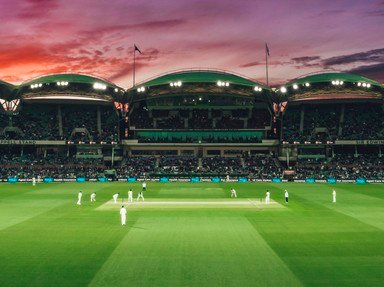
Born at the Wrong Time Trivia Quiz
Australia dominated Test cricket for two decades from 1990. Richly blessed with a depth of talent, there were far too many who couldn't get a Test or played a lot less than their talent deserved. Here are some of their stories.
A classification quiz
by pollucci19.
Estimated time: 3 mins.
- Home
- »
- Quizzes
- »
- Sports Trivia
- »
- Cricket
- »
- Australia